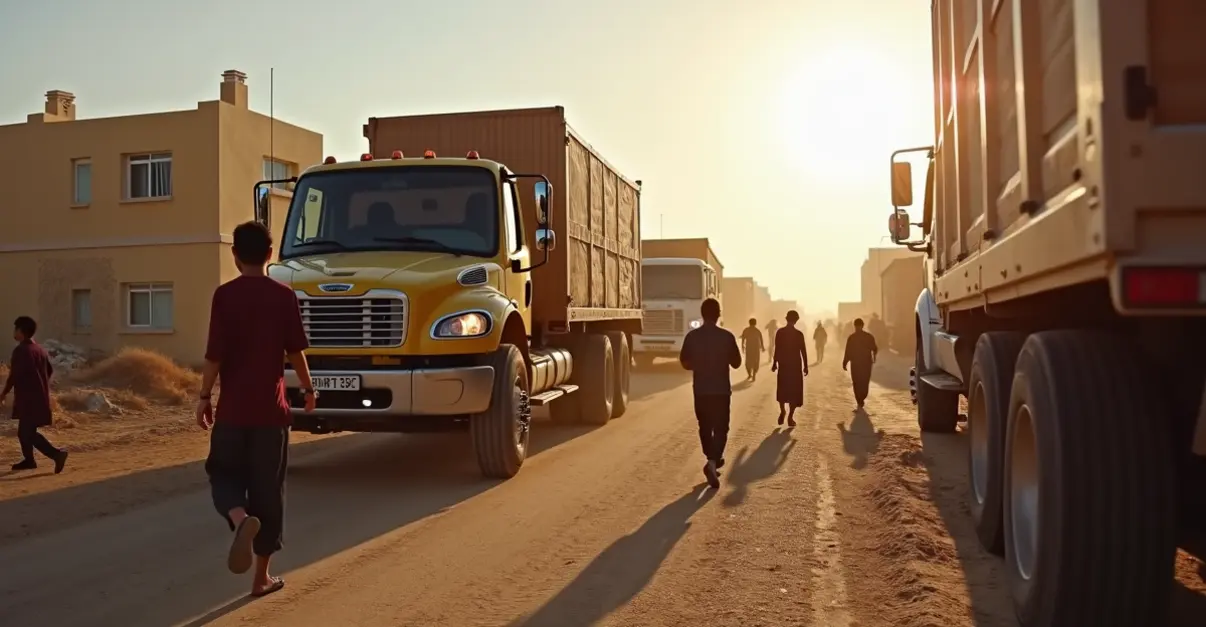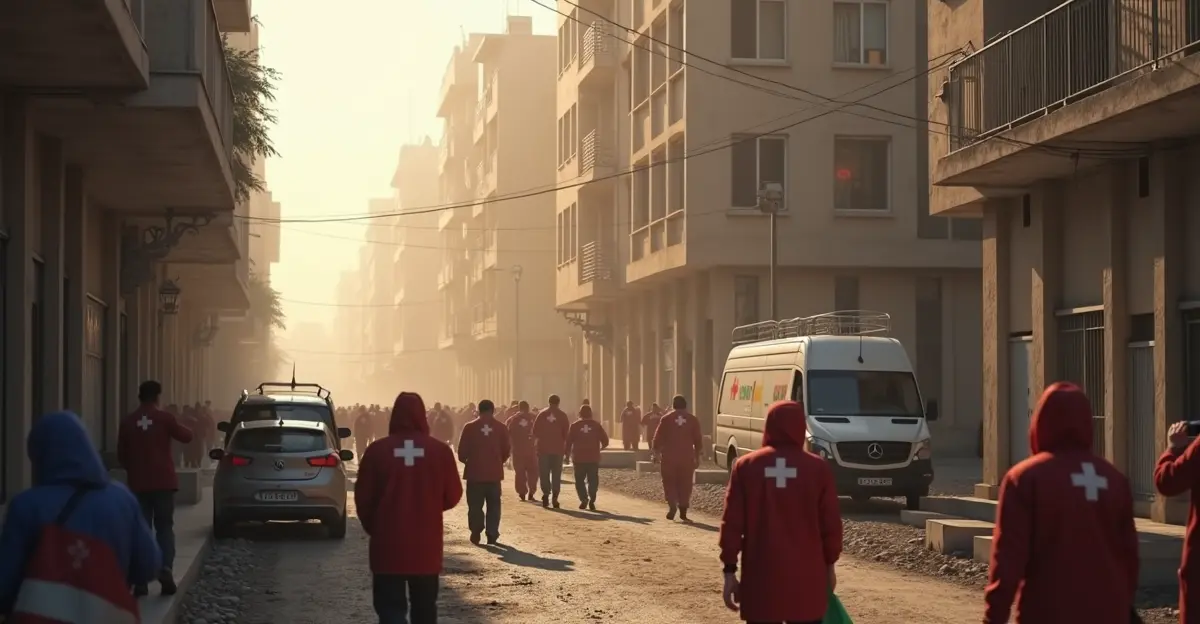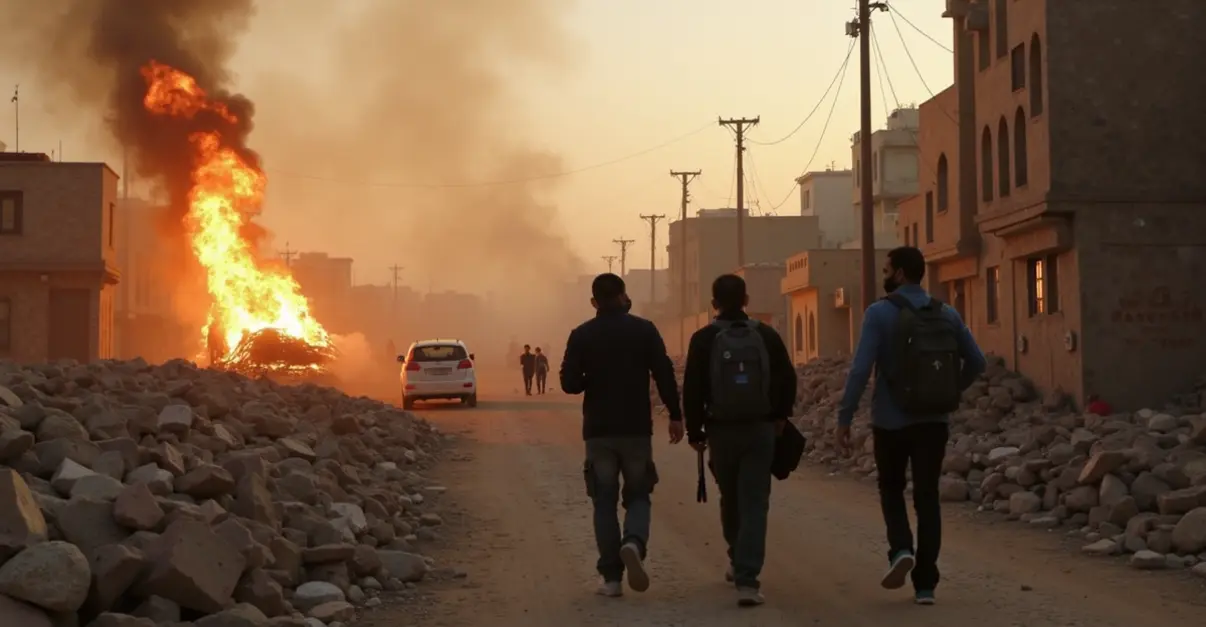Gaza humanitarian corridor negotiations advance with October 2025 ceasefire allowing up to 600 aid trucks daily, but famine crisis deepens with 640,000 facing starvation. Security challenges and looting hamper distribution despite international efforts.

Breakthrough in Gaza Humanitarian Negotiations
After two years of devastating conflict that began with Hamas's October 7, 2023 attack, a significant breakthrough has emerged in Gaza humanitarian corridor negotiations. The U.S.-brokered ceasefire agreement, announced by President Donald Trump and ratified by Israel on October 10, 2025, includes critical provisions for humanitarian aid access that could potentially save hundreds of thousands of lives in the besieged territory.
Ceasefire Terms and Aid Provisions
The October 2025 agreement represents the most comprehensive ceasefire since the conflict began, with four key components: an immediate comprehensive ceasefire, release of all remaining Israeli hostages held in Gaza, freeing of approximately 2,000 Palestinian prisoners, and increased humanitarian aid into Gaza. Under the ceasefire terms, Israel committed to permit up to 600 humanitarian aid trucks to enter Gaza each day, though initial implementation has fallen short of this target.
'This ceasefire offers desperately needed relief for Palestinian civilians who have faced unlawful killings, starvation, and displacement for two years,' said a spokesperson from Human Rights Watch. 'However, Palestinians will continue suffering unless Israel lifts its unlawful blockade and allows large-scale aid delivery.'
Security Guarantees and Implementation Challenges
Israel has implemented daily 10-hour humanitarian pauses and secure aid corridors, with over 10,000 aid trucks entering Gaza since May 2025 carrying food, medical supplies, and baby formula. The U.S.-Israel-backed Gaza Humanitarian Foundation (GHF) operates distribution sites serving over 2.2 million weekly food packages, providing a secure alternative to UN channels vulnerable to Hamas interference.
However, significant security challenges remain. According to a report from the AJC, Hamas has complicated aid delivery by co-opting humanitarian assistance for its benefit and allegedly running disinformation campaigns against independent aid efforts. The organization notes that Hamas has embedded among civilians and placed bounties on aid workers, creating dangerous conditions for humanitarian operations.
Famine Crisis Deepens Despite Aid Efforts
The humanitarian situation remains catastrophic. On August 22, 2025, the Famine Review Committee officially declared famine in Gaza Governorate, with projections showing over 640,000 people (nearly one-third of Gaza's population) facing famine-level hunger by September's end. The crisis is described as "man-made" due to Israeli restrictions on humanitarian aid.
Refugees International reports that food security is rapidly deteriorating, with 1,857 Palestinians killed while seeking food between May and August. Nutrition screening revealed alarming trends: 12,800 children diagnosed with acute malnutrition in August, with case identification rates spiking from 8.3% to 13.5%. In Gaza city, nearly one in five children (19%) is affected, and severe cases increased to over 23%.
Logistical Hurdles and Distribution Problems
Between August 31-September 13, 2025, over 77% of food aid was looted or taken by hungry crowds, preventing targeted distributions according to UN OCHA reports. Humanitarian partners distributed 558,000 daily meals across Gaza, with significant scaling in central and southern areas due to displacement.
The collapse of infrastructure continues to hamper aid delivery. Since the Zikim Crossing closure on September 12, no food aid has reached northern Gaza where a human-made famine was confirmed on August 22. Health infrastructure has largely collapsed, with 65 medical facilities still non-functional since March. Fuel supplies are critically limited, covering only 41% of water and sanitation needs.
International Response and Future Prospects
Despite international condemnation from 28 countries, responses from Israel and the US have been inconsistent. The U.S. has committed $30 million to support GHF as a secure alternative to UN channels. However, humanitarian access remains severely restricted, with only 1,334 trucks entering Gaza since July 27—far below the 600-per-day benchmark needed.
'The situation demands immediate ceasefire and surge of humanitarian assistance across all sectors,' emphasized a Refugees International representative. 'We're seeing 28 children reportedly dying daily from malnutrition, with only five stabilization centers and 43 beds available for the entire population.'
As negotiations continue, the international community watches closely whether the October ceasefire will translate into meaningful improvements in humanitarian access or whether logistical and security challenges will continue to prevent life-saving aid from reaching those most in need.

 Nederlands
Nederlands
 English
English
 Deutsch
Deutsch
 Français
Français
 Español
Español
 Português
Português









